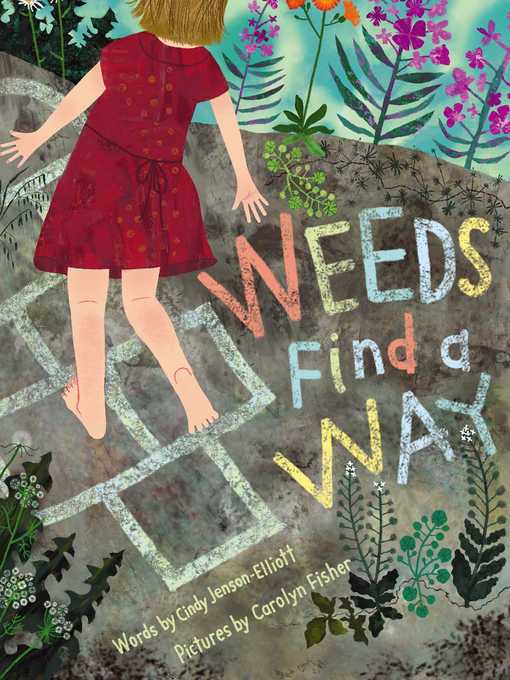
Weeds Find a Way
فرمت کتاب
ebook
تاریخ انتشار
2014
Lexile Score
630
Reading Level
2-3
نویسنده
Carolyn Fisherناشر
Beach Lane Booksشابک
9781442441262
کتاب های مرتبط
- اطلاعات
- نقد و بررسی
- دیدگاه کاربران
نقد و بررسی

December 2, 2013
“Good or bad, weeds offer endless opportunities to study one of nature’s most wonderful tools: adaptation,” writes Jenson-Elliott in an afterword to this flowery (no pun intended) tribute to the tenacity and versatility of plants that are often overlooked and unwanted. Using mixed-media paintings and digitally collaged elements, Fisher (Good Night, World) presents up-close images of feathery seeds bursting from pods, “like confetti from a popped balloon,” and squeezing their way out of cracks in the cement. A girl and her dog make their way through several scenes, adding a touch of fauna amid the flora. In one scene, the girl blows dandelion puffs into the wind; in another, a handful of “prickly burrs” cling to her socks, both evidence of how weeds can propagate. In addition to her afterword, Jenson-Elliott concludes with three pages of details about two dozen types of weeds, from wild carrot (aka Queen Anne’s lace) to toxic locoweed. The many intriguing details will leave readers with the understanding that these plants are fighters. Ages 4–8. Author’s agent: Stefanie von Borstel, Full Circle Literary.

November 15, 2013
Adaptable weeds find ways to spread themselves and their seeds, to grow in strange places, and to be loved and admired. Mixed-media digital collage illustrations on double-page spreads follow a girl and her dog through a world of weeds, from seeds to flowers. Sometimes--as in an image of milkweed seeds shooting from a pod--these pictures focus on the weeds themselves; sometimes they include parts of the girl or dog; and some are full scenes. Weed seeds wait through a winter snow. They bake on hot sidewalks. They sprout "in a tangle of tree roots" and flower into "umbrellas of the finest white lace." Some shatter and spread when pulled; others avoid being eaten, thanks to thorns and poisons. The hand-lettered alliterative text provides a simple introduction to the idea of weeds. With very few lines to each page, it reads aloud smoothly. The author, a California-based nature educator, includes a "Meet the Weeds" afterword, defining them as plants growing where they aren't wanted and describing 24 common U.S. weeds, from dandelions to wild oats. A small, suggestive image accompanies each description. Neither formal introduction nor field guide, this unusual reminder of weeds' admirable qualities nevertheless merits a place on the nature-study shelf of preschool and early-elementary classrooms. (Informational picture book. 3-7)
COPYRIGHT(2013) Kirkus Reviews, ALL RIGHTS RESERVED.

February 1, 2014
K-Gr 2-Instead of lamenting their pesky invasiveness, Jenson-Elliott celebrates weeds for their heartiness and ability to disseminate and adapt. Poetic imagery describes how they are "shot out of tight, dry pods like confetti from a popped balloon" and "baking in shimmering summer heat on a white-hot sidewalk without a whisper of wind"), and the bold colors of the mixed media/digital collage illustrations do an admirable job of making the ordinary become stunning. More detailed information about how weeds can actually be useful despite their reputation can be found in the back matter, along with a list both identifying and offering further facts about the plants pictured in the book. Looking for where the nodding thistle, oxeye daisy, spotted knapweed, etc., appear in the story will encourage repeated readings and offer more opportunities for learning. Expect to have readers rooting and exploring for the ubiquitous plants.-Joanna K. Fabicon, Los Angeles Public Library
Copyright 2014 School Library Journal, LLC Used with permission.

























دیدگاه کاربران